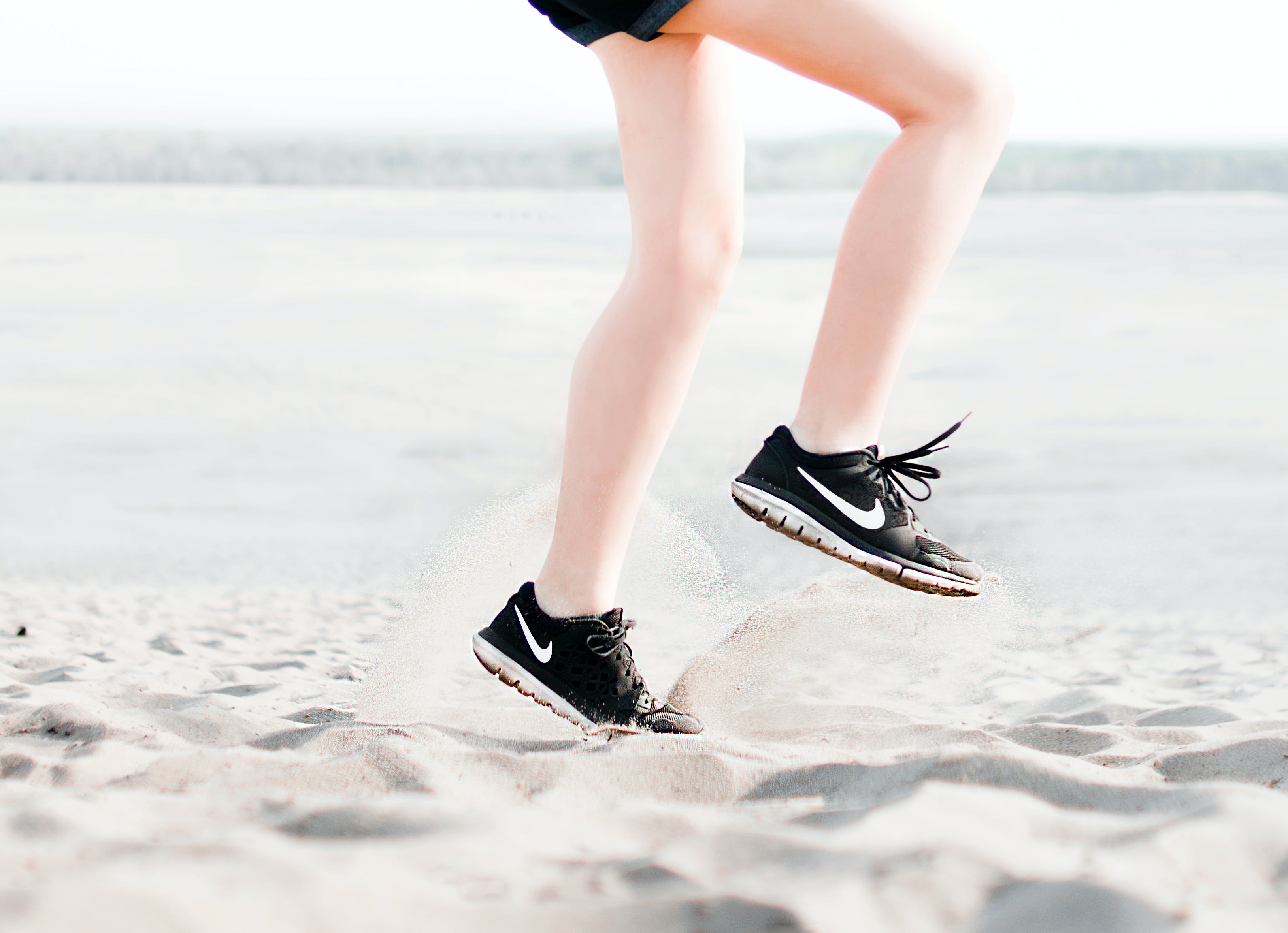Flat feet, also known as pes planus, is a condition where the arch of the foot is lower than usual or completely absent. This can significantly impact a runner’s performance and comfort. The arch of the foot acts as a natural shock absorber, and without it, the impact from running can cause strain on other parts of the body, such as the ankles, knees, hips, and lower back.
Runners with flat feet often experience overpronation, where the foot rolls inward excessively with each step. This can lead to a range of issues including plantar fasciitis, shin splints, and even stress fractures. Recognizing and addressing this condition is crucial for maintaining a healthy and enjoyable running routine.
It’s essential for runners with flat feet to choose the right footwear to mitigate these risks. The best running shoes for flat feet provide ample arch support, stability, and cushioning to compensate for the lack of natural arch. Such shoes can help distribute the impact more evenly across the foot, reducing the likelihood of injury.
If you’re new to running or have recently discovered that you have flat feet, don’t be discouraged. With the right knowledge and equipment, you can still enjoy all the benefits that running has to offer. Visit our website to learn more and get started today! Click here.
Key Features of Running Shoes for Flat Feet
When selecting the best running shoes for flat feet, there are several key features to look for to ensure optimal support and comfort. These features are designed to address the specific needs of flat-footed runners and help prevent injuries.
1. Arch Support: Running shoes with adequate arch support are crucial for flat-footed runners. Arch support helps distribute pressure evenly across the foot and reduces the strain on the plantar fascia.
2. Stability: Stability shoes are designed to prevent overpronation, which is common among flat-footed runners. These shoes have a denser material on the inner side of the midsole to keep the foot from rolling inward excessively.
3. Cushioning: Proper cushioning is essential to absorb the impact of each stride. Look for shoes with ample cushioning in the midsole to protect your feet and joints from the repetitive stress of running.
4. Heel Support: A firm heel counter can provide additional support and stability, helping to keep your heel in place and reduce the risk of injury.
5. Wide Toe Box: A wider toe box allows your toes to spread naturally, providing better balance and reducing pressure points that can lead to discomfort and blisters.
By focusing on these essential features, flat-footed runners can find shoes that not only enhance their running experience but also protect them from common injuries associated with their foot type. Investing in the right pair of running shoes is a step towards achieving fitness freedom and enjoying the journey to better health.
Top Brands Offering Shoes for Flat Feet

When it comes to finding the best running shoes for flat feet, certain brands stand out for their exceptional design and innovative support features. Here are some top brands that cater to flat-footed runners:
1. Asics: Known for their advanced technology and comfort, Asics offers a range of stability and motion control shoes perfect for flat feet. Models like the Asics Gel-Kayano provide excellent arch support and cushioning.
2. Brooks: Brooks is famed for its commitment to comfort and biomechanics. The Brooks Adrenaline GTS series, for example, is praised for its supportive structure and reliable stability, making it a favorite among flat-footed runners.
3. New Balance: New Balance combines style with functionality. Their shoes, such as the New Balance 860, are designed with a focus on providing robust arch support and a stable running experience.
4. Saucony: Saucony’s Guide and Omni series are popular choices for those with flat feet. These shoes feature excellent stability and cushioning, ensuring a comfortable run while preventing overpronation.
5. Hoka One One: Hoka One One is renowned for its maximalist cushioning. Models like the Hoka Arahi offer a blend of plush cushioning and stability, making them ideal for flat-footed runners needing extra shock absorption.
6. Mizuno: Mizuno’s Wave Inspire series is another great option for flat-footed runners. These shoes are designed to provide a balance of cushioning and support, making them suitable for longer runs.
These brands have consistently delivered on quality, ensuring that flat-footed runners can enjoy their runs with the necessary support and comfort. Exploring these options can lead to finding the perfect pair that meets your specific needs and enhances your running journey.
Detailed Reviews of Top Running Shoes

Finding the best running shoes for flat feet requires sifting through numerous options to find the perfect match. Below are detailed reviews of top running shoes that cater specifically to flat-footed runners:
1. Asics Gel-Kayano 27: The Asics Gel-Kayano 27 is a standout choice for flat-footed runners. It features Dynamic DuoMax support and FlyteFoam Propel technology, providing exceptional stability and cushioning. The shoe’s engineered mesh upper ensures breathability, while the Guidance Trusstic System enhances gait efficiency.
2. Brooks Adrenaline GTS 21: Known for its balance of comfort and support, the Brooks Adrenaline GTS 21 uses GuideRails technology to keep excess movement in check. The DNA LOFT cushioning extends throughout the midsole for a smooth, soft ride, making it ideal for long-distance runs.
3. New Balance 860v11: The New Balance 860v11 offers a perfect blend of durability and support. Its dual-density medial post helps control pronation, while the TRUFUSE midsole provides responsive cushioning. The engineered mesh upper and Ultra Heel design ensure a snug, comfortable fit.
4. Saucony Guide 14: The Saucony Guide 14 is designed to offer a supportive yet flexible feel. PWRRUN cushioning delivers a responsive ride, and the TPU guidance frame helps maintain a steady stride. The FORMFIT upper conforms to the foot for a customized fit.
5. Hoka One One Arahi 5: The Hoka Arahi 5 is a game-changer for flat-footed runners seeking maximum cushioning. Its J-Frame technology provides dynamic stability, while the Early Stage Meta-Rocker ensures smooth transitions. The breathable mesh upper enhances comfort on long runs.
6. Mizuno Wave Inspire 17: The Mizuno Wave Inspire 17 combines Wave technology with a U4ic midsole for optimal stability and cushioning. The shoe’s engineered mesh upper offers a secure, breathable fit, making it a reliable choice for everyday training.
Each of these shoes excels in providing the much-needed support and comfort for flat-footed runners. Whether you’re a novice or an experienced runner, these detailed reviews can guide you in selecting the perfect pair for your running needs.
Tips for Choosing the Right Running Shoes

Selecting the best running shoes for flat feet can be an overwhelming process, but with the right guidance, you can find a pair that offers the perfect balance of support, comfort, and performance. Here are some essential tips to help you choose the right running shoes:
1. Understand Your Foot Type: Before purchasing running shoes, it’s crucial to understand your foot type. Flat feet typically require shoes with good arch support and stability features to prevent overpronation.
2. Prioritize Arch Support: Look for running shoes that offer robust arch support. This helps in distributing pressure evenly across your feet and reduces strain on your arches. Shoes with built-in orthotics or the ability to accommodate custom orthotics are ideal.
3. Focus on Cushioning: Proper cushioning is essential for flat-footed runners to absorb shock and reduce impact. Opt for shoes with ample cushioning in the midsole to enhance comfort during your runs.
4. Stability and Motion Control: Stability shoes are designed to support the arch and provide extra control to avoid inward rolling of the foot. Motion control shoes offer even more support and are particularly beneficial for severe overpronators.
5. Try Before You Buy: Always try on running shoes before making a purchase. Walk or jog in them to ensure they fit comfortably and provide the necessary support. Remember, the right fit is crucial in preventing injuries.
6. Consider Your Running Terrain: The type of terrain you run on can influence your shoe choice. Road runners should opt for shoes with good cushioning and support, while trail runners need shoes with enhanced grip and durability.
7. Replace Worn-Out Shoes: Running shoes lose their effectiveness over time. It’s advisable to replace your running shoes every 300-500 miles to maintain optimal support and cushioning.
By following these tips, you can make an informed decision and find the perfect running shoes tailored to your flat feet. Investing in the right pair of shoes will not only enhance your performance but also keep you comfortable and injury-free on your running journey.
Expert Advice and FAQs on Flat Feet

When it comes to flat feet, expert advice can be invaluable for making informed decisions about your running gear and overall foot health. Below, we’ve compiled some frequently asked questions and expert insights to help you navigate your running journey with flat feet.
Q: What are the common issues faced by runners with flat feet?
A: Runners with flat feet often experience overpronation, where the foot rolls inward excessively. This can lead to a range of issues including shin splints, plantar fasciitis, and knee pain. Choosing the right running shoes with adequate support can mitigate these problems.
Q: Are there specific exercises to help with flat feet?
A: Yes, exercises such as arch lifts, toe curls, and calf stretches can strengthen the muscles in your feet and improve arch support. Consistently performing these exercises can reduce discomfort and enhance overall foot stability.
Q: How do I know if my running shoes are suitable for flat feet?
A: Look for shoes labeled as stability or motion control. These shoes are designed to provide the extra support needed for flat feet. Additionally, ensure the shoes have good arch support, ample cushioning, and a comfortable fit.
Q: How often should I replace my running shoes?
A: It’s generally recommended to replace running shoes every 300-500 miles. For runners with flat feet, it’s crucial to monitor wear and tear closely, as deteriorating support can lead to injuries.
Q: Can orthotics help with flat feet?
A: Custom orthotics can be highly beneficial for flat-footed runners. They provide personalized support and can be used in conjunction with supportive running shoes to enhance comfort and performance.
For more expert advice and tailored recommendations, visit our website to learn more and get started today! Click here.


